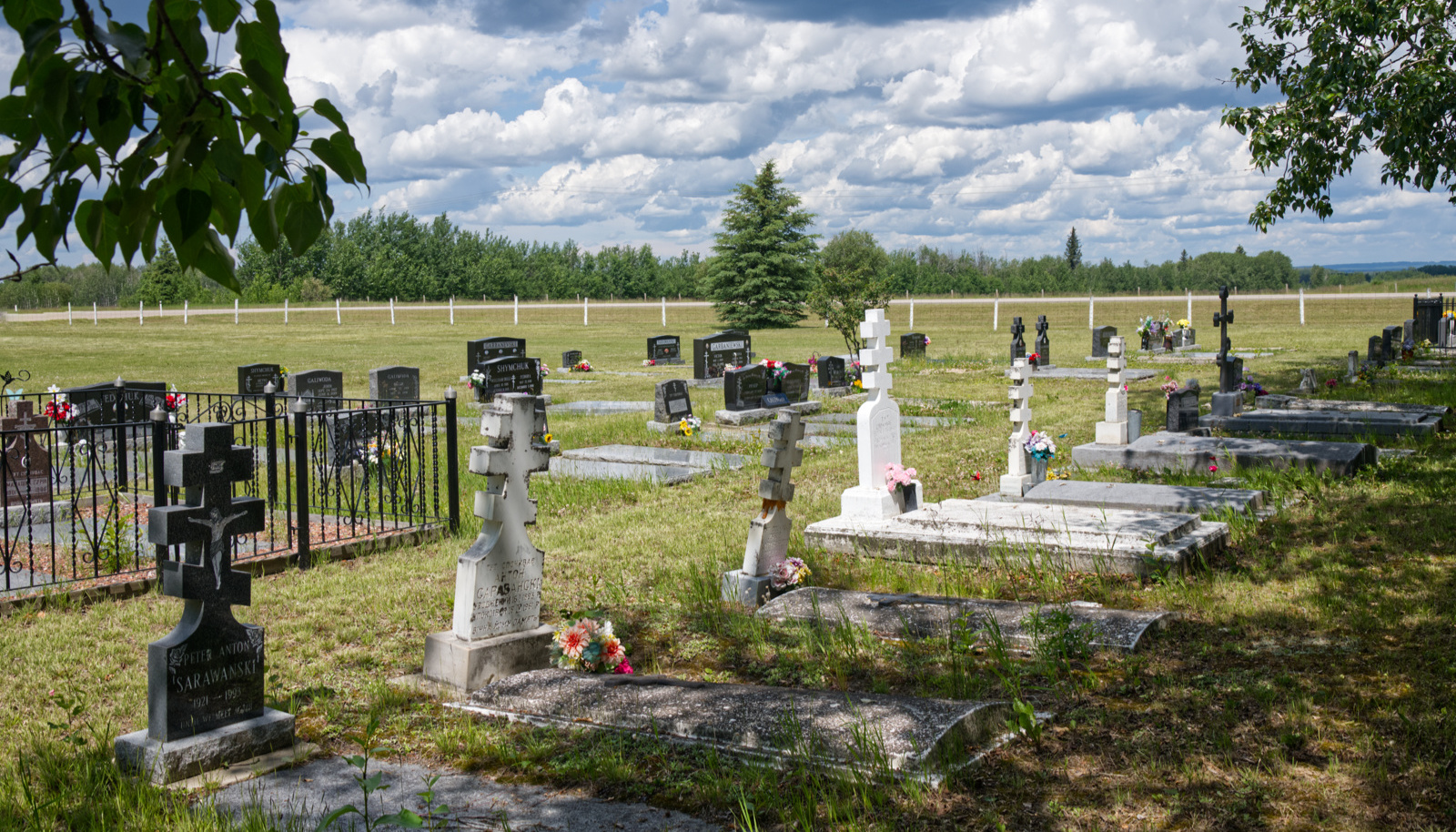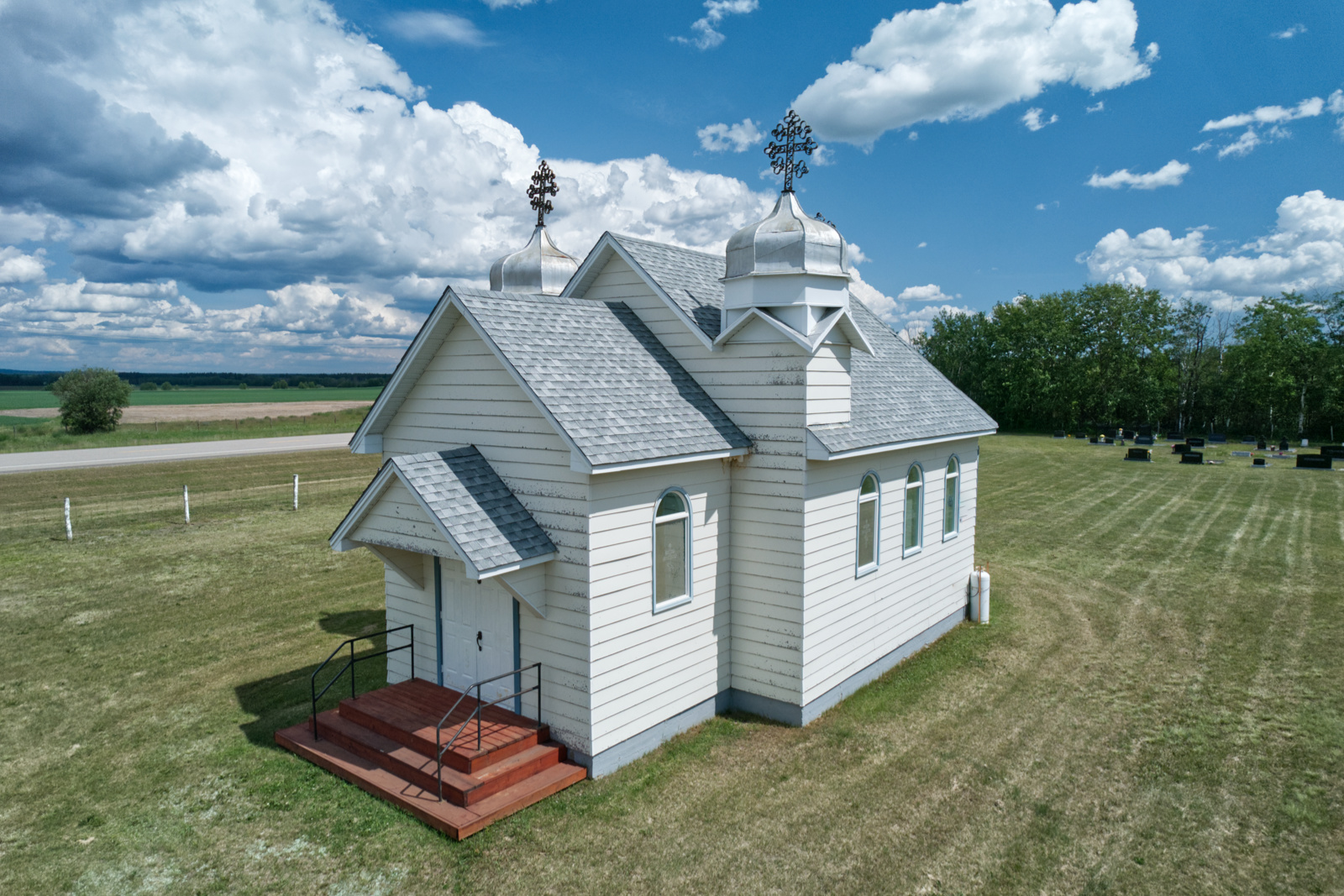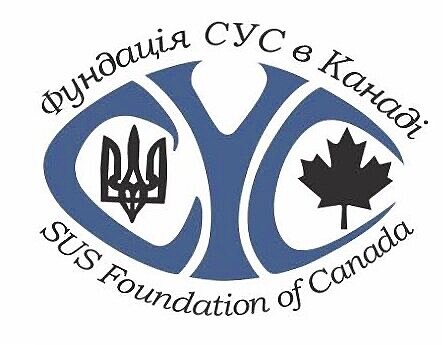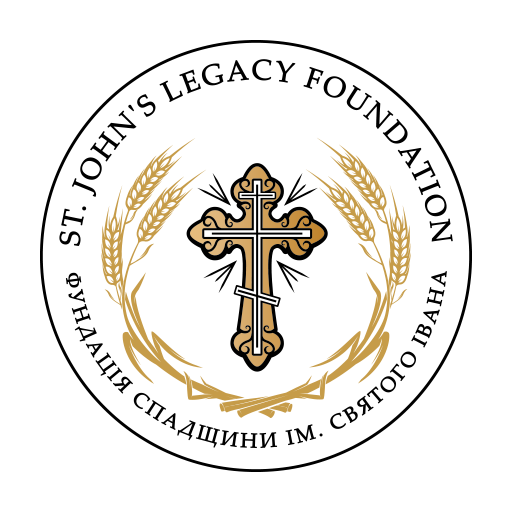The immigrants from Volhynia, Bukovyna and Galicia began settling this isolated area in the mid- and late 1920s, with the largest influx coming between 1929-1931. Among them were Ukrainian Catholic, Evangelical and Pentecostal believers, all of whom started congregations and built churches in adjacent settlements to Sandy Rapids, where a school district was established in April 1933. That same year a piece of land was obtained from the government by some of the local farmers for use as an independent cemetery.
In April 1935 an organizational meeting was held in the community, probably at the suggestion of Fr. Ivan Mayba. It was decided to begin inviting priests from Smoky Lake to serve the growing Ukrainian Orthodox population of the Sandy Lake district. Around the same time, the initiative group contacted lawyer Peter Lazarowich in Edmonton with a request that he assist them in getting themselves incorporated as part of the Ukrainian Greek Orthodox Church of Canada so that property that they had acquired could be legally registered as a cemetery. Otherwise, the newly-formed congregation was in danger of forfeiting the land. As a result of these developments, another meeting was held on 15 June 1935 at the home of Wasyl Karasiuk, when a congregation in the name of the Virgin Mary was formally inaugurated. It is known that the first liturgy in the Sandy Rapids district was celebrated by Fr. I. Mayba, and that private homes continued to be used for occasional religious gatherings for more than a decade afterwards.
Because of its remote location, the Sandy River community had only sporadic services from UGOC clergy during these formative years. Nevertheless, in late 1940 a congregation member wrote a letter to the Consistory expressing concerns that some of the Volhynian residents of Sandy Rapids (described as being supporters of “Tsarodoxy” and “katsapism”) were talking about wresting control of the cemetery on behalf of the Russian Orthodox Mission. It was feared that such a move was being planned for a congregational meeting to be held in January 1941. Although it is unclear if such an attempt was ever made, the Consistory advised that the church property, having been registered with the UGOC, could not be legally be taken by the Russian Mission, so long as even a minority remained committed to the Ukrainian Orthodox Church in whose name the congregation had been organized. Regardless, this threat – which was largely attributed to the work of a Volhynian agitator who was trying to convince his countrymen that they were “White Ruthenians,” or Belarusians – seems to have passed without major incident or lasting effect. Indeed, by late 1942, the congregation announced that it was thinking of building a sanctuary. In December, they wrote to the Consistory asking for their assistance in getting a government permit to cut the timber required to produce 12,000 feet of boards. The necessary arrangements were finally made the following March. On 6 June 1943, the congregation passed a resolution re-affirming that it was an integral and permanent part of the Ukrainian Greek Orthodox Church of Canada, recognizing its charter, bylaws and the decisions of Sobors, while the property remained under the ownership and control of the congregation members as a component part of the UGOC.
Since the Second World War had exacerbated the UGOC’s longstanding difficulties in supplying priests to many rural settlements, the Sandy Rapids Orthodox faithful received very few pastoral visits in the first half of the 1940s. Recognizing this situation, and the fact the community was in process of trying to build a place of worship, in 1947 the Consistory absolved the congregation of all of its debts to the Diocesan Fund from 1940 to 1945. Not surprisingly, following the permanent appointment of Fr. Senishen to the Glendon parish district in late 1944, the pastoral care provided to Sandy Rapids improved noticeably. Consequently, in 1946 the congregation claimed to have six member families and hosted five Divine liturgies (both figures increasing by one the following years), so its annual fee to the Consistory was restored.
By 1948 the congregation was finally ready to undertake the construction of their church. Three hundred dollars was initially raised by the building committee to get started. Some 3,500 feet of lumber were donated by members for the structure – the design of which is said to have been modelled after churches that the local settlers remembered from the villages in their Ukrainian homeland. A man named Klym Martyniuk (who in 1933 had been the founding chairman of the Garth Ukrainian Evangelical Church) was hired as the carpenter to oversee the project at a dollar an hour. Helped by volunteers, his labour charges eventually totalled $1100. The rectangular shaped structure with a large vestibule was adorned with two flanking domes over the corners of the façade, and was completed without incurring any debts thanks to the successful fundraising efforts of the members. Meanwhile, in early 1949 the congregation wrote to the Consistory requesting that their feast day be changed from that of St. Mary the Protectress to All Saints Sunday.
Having their own place of worship helped to stabilize and stimulate the congregational life of the Sandy Rapids congregation. By 1951 it had grown to 14 families and celebrated eight Divine Liturgies. Two years later, the number of services had increased to eleven. But the lack of a permanent priest for the Glendon district was causing some Sandy Lake adherents to talk about going over to the Russian Orthodox church. By 1955 the congregation was also reporting that it was having difficulties instilling religious values in the youth and that it could not afford to send a delegate to the Sobor. Nevertheless, throughout the second half of the 1950s, 12-13 liturgies were sung at the All Saints church each year. The membership had expanded to 28 families by 1960, when the church was formally consecrated at a Hierarchical service officiated by Bishop Andrew of the Western Diocese. By this time, the interior of the sanctuary was fully finished, and boasted a large and attractive ikonostasis.
The congregation continued to flourish for several more years, but then gradually began to lose members with the passing of time and the decline of rural populations. Nevertheless, in 1994 the congregation reported having a total 18 adult members, seven of whom were couples.

Play Memory Eternal Chant
GPS Co-ordinates: 54.456690, -111.025846
Affiliation: Ukrainian Orthodox Church of Canada






